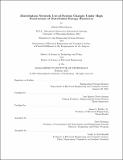| dc.contributor.advisor | Jose Ignacio Perez-Arriaga. | en_US |
| dc.contributor.author | Bharatkumar, Ashwini | en_US |
| dc.contributor.other | Massachusetts Institute of Technology. Department of Electrical Engineering and Computer Science. | en_US |
| dc.date.accessioned | 2015-07-31T18:18:20Z | |
| dc.date.available | 2015-07-31T18:18:20Z | |
| dc.date.copyright | 2015 | en_US |
| dc.date.issued | 2015 | en_US |
| dc.identifier.uri | http://hdl.handle.net/1721.1/97942 | |
| dc.description | Thesis: S.M. in Technology and Policy, Massachusetts Institute of Technology, Engineering Systems Division, 2015. | en_US |
| dc.description | Thesis: S.M., Massachusetts Institute of Technology, Department of Electrical Engineering and Computer Science, 2015. | en_US |
| dc.description | This electronic version was submitted by the student author. The certified thesis is available in the Institute Archives and Special Collections. | en_US |
| dc.description | Cataloged from student-submitted PDF version of thesis. | en_US |
| dc.description | Includes bibliographical references (pages 66-69). | en_US |
| dc.description.abstract | Growing integration of distributed energy resources (DER) presents the electric power sector with the potential for signicant changes to technical operations, business models, and industry structure. New physical components, control and information architecture, markets, and policies are required as the power system transitions from one of centralized generation and passive load to a network of increasingly decentralized generation and diverse system users. Price signals will play a crucial role in shaping the interactions between the physical components and users of the electric power system. Distribution network use-of-system (DNUoS) charges signal to network users how their utilization of the distribution system impacts system costs and each user's share of those costs. Distribution utilities cover network operation and maintenance costs and recover infrastructure in- vestments through DNUoS charges applied to network users. This thesis develops a framework for the design of DNUoS charges that addresses the challenge of distribution network cost allocation under growing penetration of DER. The proposed framework is comprised of 1) the use of a reference network model (RNM) to identify the key drivers of distribution system costs and their relative shares of total costs, and 2) the allocation of those costs according to network utilization profiles that capture each network user's contribution to and share of total system costs. The resulting DNUoS charges are highly differentiated for network users according to the impact that network use behaviors have on system costs. This is a substantial departure from existing methods of distribution network cost allocation and thus presents implementation challenges and implications that may be addressed in a range of ways to achieve varying regulatory objectives. | en_US |
| dc.description.statementofresponsibility | by Ashwini Bharatkumar. | en_US |
| dc.format.extent | 77 pages | en_US |
| dc.language.iso | eng | en_US |
| dc.publisher | Massachusetts Institute of Technology | en_US |
| dc.rights | M.I.T. theses are protected by copyright. They may be viewed from this source for any purpose, but reproduction or distribution in any format is prohibited without written permission. See provided URL for inquiries about permission. | en_US |
| dc.rights.uri | http://dspace.mit.edu/handle/1721.1/7582 | en_US |
| dc.subject | Engineering Systems Division. | en_US |
| dc.subject | Technology and Policy Program. | en_US |
| dc.subject | Electrical Engineering and Computer Science. | en_US |
| dc.title | Distribution network use-of-system charges under high penetration of distributed energy resources | en_US |
| dc.type | Thesis | en_US |
| dc.description.degree | S.M. in Technology and Policy | en_US |
| dc.description.degree | S.M. | en_US |
| dc.contributor.department | Massachusetts Institute of Technology. Department of Electrical Engineering and Computer Science | |
| dc.contributor.department | Massachusetts Institute of Technology. Engineering Systems Division | |
| dc.identifier.oclc | 914766418 | en_US |
